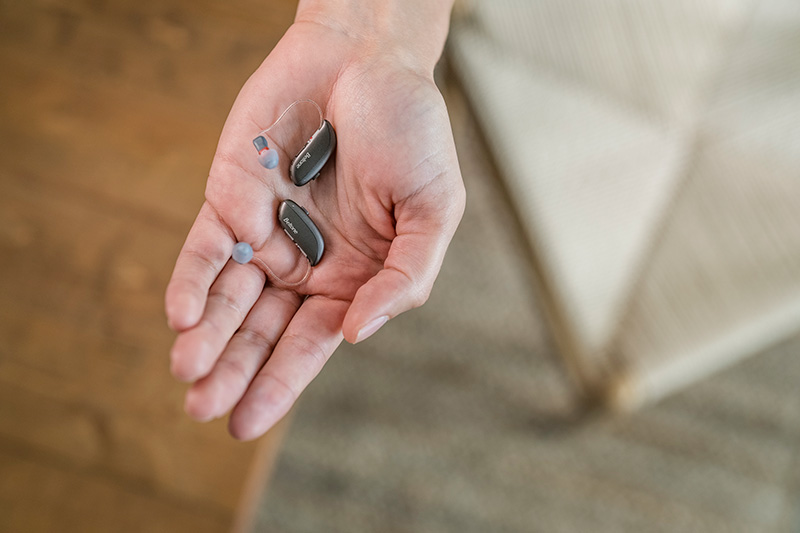How do hearing aids work?
Hearing aids are an incredibly complex technology, which can be surprising, given how small hearing aids are – they really pack a punch!
In order to help you hear better, hearing aids have a few key components that work in tandem, including the microphone, the amplifier, and the speaker.
The microphone is the first part of the hearing aid that external sounds will face on their way to your ear canal, and it’s responsible for simply capturing those external sounds and passing them to the amplifier. The amplifier will then convert that sound into electrical signals that your inner ear can process. Lastly, the speaker takes those signals and delivers them to your inner ear.
While different hearing aid styles look different, the technology and components that power them are largely the same, with a few small exceptions.
Different styles of hearing aids
In the same way that glasses have different types of frames and lenses to support different eyesight issues, hearing aids come in an array of options, as well, which can make hearing aid shopping seem a little daunting at first. But, once you have a bit of knowledge about each type and the type of hearing loss that each type best supports, it’s not as scary as it seems!
Invisible in the Canal (IIC):
By far the smallest hearing aid, IIC devices fit snugly in your ear canal and can remain almost hidden from the normal person. While the discreetness of IIC hearing aids is often desired, IIC devices’ smaller size makes them best suited for mild-to-moderate cases of hearing loss.
Behind the Ear (BTE):
BTE hearing aids are probably what you think of when you think of hearing aids, and they are one of the most common. These devices sit behind your ear and have a small tube that wraps over the top of your ear to connect the inner ear to the device. BTE devices are great for any level of hearing loss!
Receiver in the Ear (RITE):
Similar to BTE hearing aids, RITE devices also sit largely behind the ear, but, unline BTE, the speaker that amplifies sound actually sits right inside the ear at the end of the connected tube. While not as popular at BTE, RITE devices are suitable for any hearing loss level.
Mic in Helix (MIH):
MIH devices are touted for being very comfortable and customizable to fit any level of hearing loss. These hearing aids are specifically molded to your ear shape and are built to sit snugly right at the opening of your ear canal and in the curved groove of your outer ear (the helix).
Completely in the Canal (CIC) / In the Canal (ITC):
Both CIC and ITC devices are two other styles that are almost always reserved for mild-to-moderate cases of hearing loss due to their smaller size. What makes CIC and ITC devices different from IIC is that they can be seen more obviously by other people. ITC devices are among the most popular hearing aid styles.
In the Ear (ITE):
Last, but not least, ITE devices are molded to fit your unique ear shape but are large enough to support more severe cases of hearing loss. They are fairly popular in the hearing aid community and are considered to be very comfortable and aesthetically pleasing.
How do you know when you need hearing aids?
Hearing loss is a very personal experience, and no two people will experience it in the same way, so it’s hard to pinpoint an exact moment when everyone would benefit from a hearing aid. In general, however, hearing aids are prescribed when hearing loss begins having a negative impact on your day-to-day life and relationships.
For example, if you can no longer hear your family conversing at the dinner table or if you’re having to crank the volume on the television to understand what’s being said, a hearing aid might be needed.
Many people go far too long before seeking help for hearing loss, and a big part of that is because they may not even realize they have hearing loss! Hearing loss is oftentimes very gradual, and it can be hard to recognize changes in your hearing unless you’re thinking about it over a long period of time.
If you think you may be experiencing hearing loss, the best thing to do is to schedule a hearing evaluation and get an expert opinion.
–
While there are a ton of options when it comes to hearing aids, you don’t have to make the decision yourself. By getting in touch with a hearing care provider – like the team at Beltone Tristate – you can gain a better understanding of your unique hearing loss situation and get a professional recommendation for the type of hearing aid that would be best for you. Book a free hearing test to get started!

